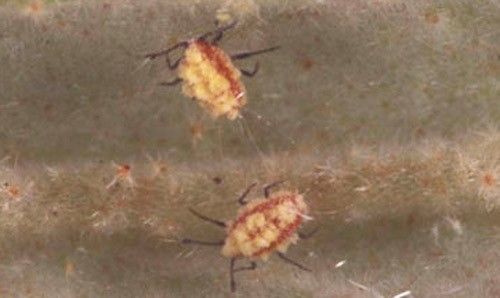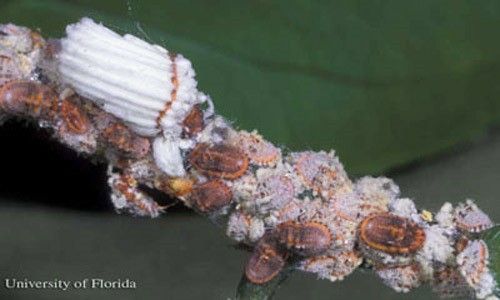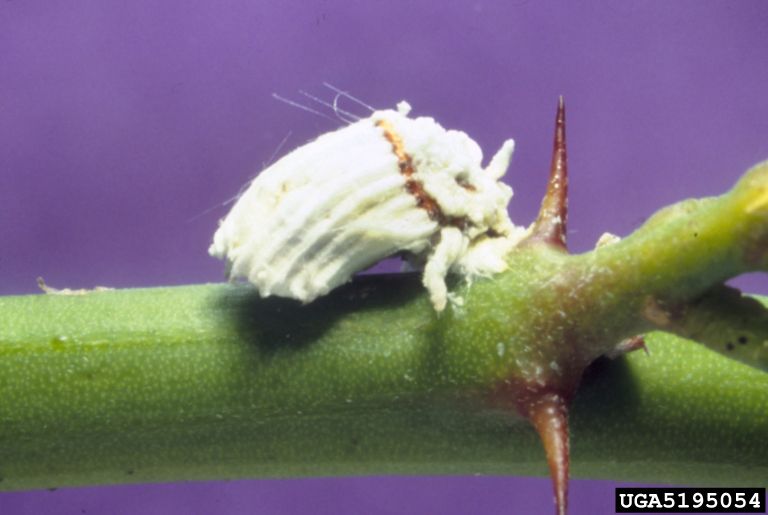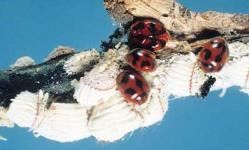
Credit: L. J. Buss, UF/IFAS
Life Cycle
The cottony cushion scale can be found anywhere citrus is grown and has been found in most Florida counties.
The eggs are red and contained in an egg sac that covers the outside of the female. The egg sac is often 2–2.5 times longer than the body and can hold approximately 1,000 eggs. The eggs are responsible for the reddish liquid that comes out of smashed egg sacs.

Credit: P.M. Choate, UF/IFAS

Credit: Jeffrey W. Lotz, Florida Department of Agriculture and Consumer Services, Bugwood.org (CC BY-SA)
Egg hatching is dependent upon temperature and may take up to two months. When hatched, the nymphs (crawlers) are minute with orange-red bodies and black extremities. They often have a small amount of wax on their backs and are bright red with dark antennae and brown legs.
Mature females have bright orange-red, yellow, or brown bodies and are partially or completely covered in a yellowish or white wax. It is more common to see females than males.
Damage
Cottony cushion scale nymphs mostly damage leaves and feed on larger twigs as they age and increase in size. Adults settle on larger branches and trunks to feed. The cottony cushion scale is rarely found on fruit. Damage from the cottony cushion scale ultimately decreases tree vitality and increases fruit drop and defoliation. Sooty mold is often found developing on their sugary honeydew secretions.

Credit: UF/IFAS CREC

Credit: Jeffrey W. Lotz, Florida Department of Agriculture and Consumer Services, Bugwood.org (CC BY-SA)